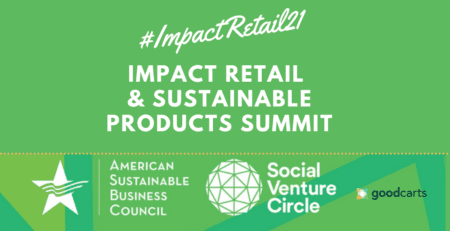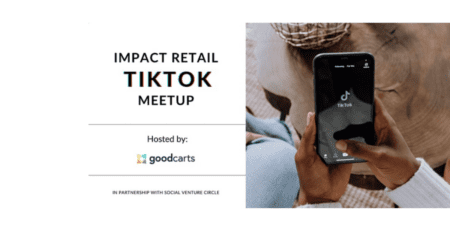Third-party cookies are on their way out. Get up to speed with what this means for your business, retargeting campaigns and more…
When it comes to online advertising, it’s the end of the world as we know it. Are we feeling fine about the death of third-party cookies? At this stage, you may not have an answer to that question – and it’s more than understandable.
As far as marketing permissions go, third-party cookies have been in the crosshairs for a while now. But with the pandemic throwing us a major curveball over the last twelve months, it’s easy to see why planning ahead for this impending impact hasn’t always been at the top of ecommerce agendas.
Third-party cookies have traditionally played a big role in winning back customers who have already visited a website, and then abandoned a cart. They’ve also been key to converting first-time shoppers into repeat customers. With this in mind, it’s obvious that we need a game plan to navigate our way through the coming changes. This article will explore what the imminent loss of third-party cookies means to the wider retail community, but especially to the enclave of social enterprises.
If you’re working within a sustainable or ethically-positioned vertical, and want to run targeted advertising campaigns to a clearly defined, niche audience (and really, who doesn’t?), then read on. You’ll learn more about what you will be able to achieve in the future, and the different routes you may need to take to get there.
The end of third-party cookies doesn’t necessarily herald disaster, but it does mean that it’s time for brands to equip themselves with new knowledge around privacy.
What Does the End of Third-Party Cookies Mean for Digital Advertising?
By the end of 2023, third-party cookies will be a thing of the past for Google Chrome. Of course, Mozilla’s Firefox and Apple’s Safari phased them out some time ago, but this move from Google (as part of their wider Privacy Sandbox strategy) is important. It signifies a decisive trend in the industry, and with Chrome enjoying close to a 70% share of the browser market and handling more than half of global web traffic, it effectively sounds the death knell for third-party cookies.
What exactly are we losing? While third-party cookies are also linked to social media buttons and live chat pop-ups, their core functionality has primarily been in tracking. With retargeting campaigns forming a core component of many marketing strategies, the loss of third-party cookies means we all need to do some thinking about the way we can evolve our practices.
Retargeting has almost been a victim of its own success. One on level, the advertisements served up to consumers, as they navigate across multiple websites, are based on clearly expressed interest, and so should, in theory, always hold appeal. On the other hand, the effect of this kind of retargeting is not exactly subtle. The obvious nature of tracking and targeting has long been a source of contention, and even annoyance, alerting users to the extent to which their behavior is noted, recorded and monetized.
So how is the online advertising industry responding to the imminent removal of third-party cookies? Ultimately, this is an evolving situation. There are no hard and fast best practices at this stage, but what we know for certain is this: end-users are tired of being tracked and want a more human, personal and transparent brand experience.
By working with user data that we already possess, and not relying on third-party go-betweens, we have an opportunity to build out much more coherent and contextual experiences without the somewhat blunt application of third-party trackers. This means that organizations (especially the big players with a lot of first-party data) will need to start thinking in terms of the “walled gardens” their own online properties represent.
Is the Departure of Third-Party Cookies a Blessing in Disguise?
While any kind of significant change within a competitive industry can lead to a degree of pearl-clutching, should we be mourning the end of third-party cookies too deeply? Let’s look at some of the ways in which these trackers could have been negatively impacting our marketing efforts to date.
Firstly, cookies are not person-specific, they’re device-specific. Anyone who has ever let their children play on their laptop or phone and then been bombarded with Minecraft messaging in the following weeks will know all about this. This does more than create frustration in the consumer – it also means wasted impressions for you as the advertiser.
As a social enterprise, you’re also looking to behave in an ethical, honest manner at all times. Third-party cookies have always had a slight “ick” factor to them as far as transparency goes. Although their use becomes very apparent when it comes to the serving of targeted ads – the actual data collection process remains a little shadowy. It’s not always clear where or when we consented to relinquish the data that tied us to the campaign.
The majority of consumers simply don’t like being aggressively marketed to – even if the products they’re being presented with are items that they probably want or need. The huge rise in the use of ad blockers is testament to this, and if nothing changed in our approach to marketing as a result of this clear signal, things would have become increasingly ineffective.
Awareness, at consumer, regulator and even governmental level, is shifting towards the prioritization of privacy. Ultimately though, third-party cookies have been an important tool, so there are going to be trade-offs while we all adapt.
And while we adapt, the losers likely won’t be behemoths like Google and Facebook. When retargeting across the open web is no longer a possibility, advertising on their properties may become the main retargeting game in town.
How Will These Changes Specifically Impact Social Enterprise?
Even though you may be happy to see the back of murky retargeting campaigns based on less than transparent methods of data collection, we still need to be sure that we’re able to reach our audiences.
In the past, display networks might have formed an important part of your strategy here. They’ve traditionally been a great way to connect with the types of shoppers who you know will have an interest in your sustainable, eco or ethical products and service.
Marketers for an Open Web (MOW), a group of newspaper publishers and technology companies have raised concerns about Google’s attempt to present these changes as a chance for more collaboration and openness, instead of seeing the move as a land grab to consolidate their dominance.
With regard to smaller retailers navigating the changes, they worry that “the people who will be most significantly affected by this will be smaller local publishers and independent businesses – they will effectively be cut out of the open online advertising marketplace causing devastating damage to their businesses.”
First-Party Cookies That Still Take the Cake
While this change to the established status quo may feel unsettling, it is important to remember that not all cookies are going away. First-party cookies are very much still operational, and for now at least, they’re going nowhere. As a business, you can and should still leverage these to your fullest advantage.
Google isn’t changing any policies for how publishers collect or use data gathered directly from users. So, a publisher that uses Google’s ad tech will still be able to sell ads that are targeted based on that publisher’s own first-party data.
Of course, first-party cookies still have their limitations. While we have access and insight into our audience’s behavior within our own properties, we’re flying blind regarding their actions across other domains. When we’re accustomed to this wider method of “joined-up thinking” to create omnichannel campaign strategies, it’s clear we’ll have a bit of recalibration to do.
Shifting Sands: Enter the Privacy Sandbox
The announcement to end third-party cookies on Google’s Chrome browser is part of a wider proposal; the Privacy Sandbox. Just how will this work? And who will it serve? Positioned by Google as a “privacy-first” alternative to the current Chrome setup, it represents a set of alternative measures that will be developed and implemented alongside Google’s ecosystem partners.
Ultimately, the goal of replacing the current situation with something that provides a better end-user experience, protecting privacy via more transparent practices, does sound admirable. But alternatives to a cookie-based approach will need to be proven effective before most marketers will be happy jumping in feet first.
The move is also not entirely unproblematic in terms of the monopoly that Google effectively exerts over advertising. The CMA has already opened an investigation into Google’s proposals to remove third-party cookies and other functionalities from its Chrome browser, arguing that this move represents anti-competitive behavior. For a deep dive into the information underpinning this investigation, head here.
The Privacy Sandbox itself will be made up of a range of different tools and functionality, including the privacy-preserving FLoC and FLEDGE proposals.
What the FLoC?
Goodbye FLoC, hello Topics
With the demise of third-party cookies, how can we replace the capacity to retarget interested audiences with our products and services, while still protecting their privacy?
Google briefly tried FLoC (Federated Learning of Cohorts), but their trials got a cool reception and user feedback wasn’t what they’d hoped for. So, in early 2022, they introduced Topics. TechCrunch offers a good overview of this new API in this article.
Unsurprisingly, more privacy means less personalization. Targeting will simply not be as sharp. ‘Show this advertisement for a Kitchen Aid mixer to someone who looked at it on Amazon within the last week will turn into ‘show this advertisement to someone that likes home cooking.’ Concerns have been raised with regard to attribution for similar reasons – if we’re not able to get really granular with data, how can we improve the effectiveness of our campaigns?
What Kind of Retargeting Will Still Be Possible?
You can still FLEDGE. Google has been working on a proposal to enable advertisers and ad tech companies to continue to target ads to audiences without the browser revealing anyone’s habits or ad interests. Originally called TURTLEDOVE, this has been refined and amended over time and the current approach is outlined in detail here.
Essentially, while Google is stopping cross-site tracking and targeting across the open web, advertisers buying through Google will be able to target ads on non-Google sites based on aggregate data (i.e. via the FLoC method.) The basic principle is that a “trusted server” (as defined by compliance with certain principles and policies) would be able and allowed to hold information about a campaign’s bids and budgets. Again, from Google, “Chrome intends to make FLEDGE available for testing through origin trials later this year with the opportunity for ad tech companies to try using the API under a “bring your own server” model.”
In addition to this, it’s important to remember that as long as you’re using your own first-party data, you’ll still be able to target specific audiences on Google properties (such as Google SERPs, and YouTube.) FLoC cohorts (or again, first-party data) will be used when purchasing ads on Google’s ad exchange to run on publisher sites (e.g. The New York Times.)
Finally, advertisers will still be able to target advertising across Google properties when users are logged into their Google accounts. For example, if someone is logged into Gmail and searches for sneakers on the main Google search engine, they may later see targeted advertisements for those sneakers on another Google-owned property, such as YouTube.
So, retargeting will be possible. But it appears that omnichannel, cross-browser campaigns are going to be problematic, and the emphasis, as you’d expect, is very much on encouraging the leverage of Google’s own digital properties. Beyond that, you’re looking at leveraging FLoC, and navigating some of the limitations that this poses.
The Future of Contextual Marketing
As you’d expect from any big industry shake-up, there’s a lot to get our heads around as end of third-party cookies draws near. Beyond the FLoC, the FLEDGE, and the fury of groups like the MOW, it’s important to take a step back and remember why this is happening.
Privacy on the web isn’t working. People are increasingly mistrustful, and perhaps, after years of pushy, gauche retargeting, we have ourselves to blame? The smartest brands – and we know that this means you, the retailers with a strong moral compass and desire for social responsibility – will recognize that a different approach is needed.
Instead of trying to “get around” the loss of third-party cookies, replicating the same behavior that our customers told us they disliked, perhaps we should be coming at this from a fresh angle? In this age of innovation it can be hard to swallow, but perhaps what’s needed isn’t a revolution but rather a return to the old ways…
Contextual marketing – presenting users with ads based on what they are currently viewing, not what they’re previously viewed – involves the placement of advertisements alongside content that will attract an interested audience. For example, camping equipment alongside information on a music festival. Could a return to these principles help brands – particularly those who already enjoy a clearly defined, niche audience, such as those operating within the social enterprise space?
There are many benefits to contextual marketing. You’ve assured the accuracy of your targeting. By making sure your advertisement is closely linked to the content of the site that the user is exploring, this strategy is hypothetically more accurate than third-party cookies in the sense that it targets a user and not a device. The interest and desire are also completely current, giving you a much more immediate impact.
GoodCarts offers a great example of exactly this kind of proactive contextual marketing. By leveraging the free network of similarly-positioned brands, you can ensure that your offer is placed in front of a well-suited customer, who’s clearly demonstrating their desire to support businesses of a similar kind to your own. There are no privacy issues or ethics to wrestle with – your offer is perfectly targeted whilst keeping users’ individual profiles anonymous. Learn more about how our innovative (and entirely free) digital coupon model works here
Ready to Futureproof Your Marketing?
The end of the third-party cookie is not a surprise, and it’s symptomatic of bigger privacy issues within online advertising that need to be addressed. As social enterprises, looking to have a positive effect on the impact economy and wider world, we need to pay attention to the signals being sent by our end users and adjust our marketing approach accordingly.
Change is coming, so take steps now to preempt and prepare for the impact that may land on your own business. There’s no need to feel like a helpless, passive observer during these seismic shifts. As individuals, we can’t influence the direction taken by the giants of the browser industry. However, we can adopt growth mindsets, mobilizing and collaborating to gain the benefits of new routes and other alternatives, such as GoodCarts, ahead of the changes that we know are coming down the line.
Get ahead of the game with contextual marketing and leverage our free promotional network today.











